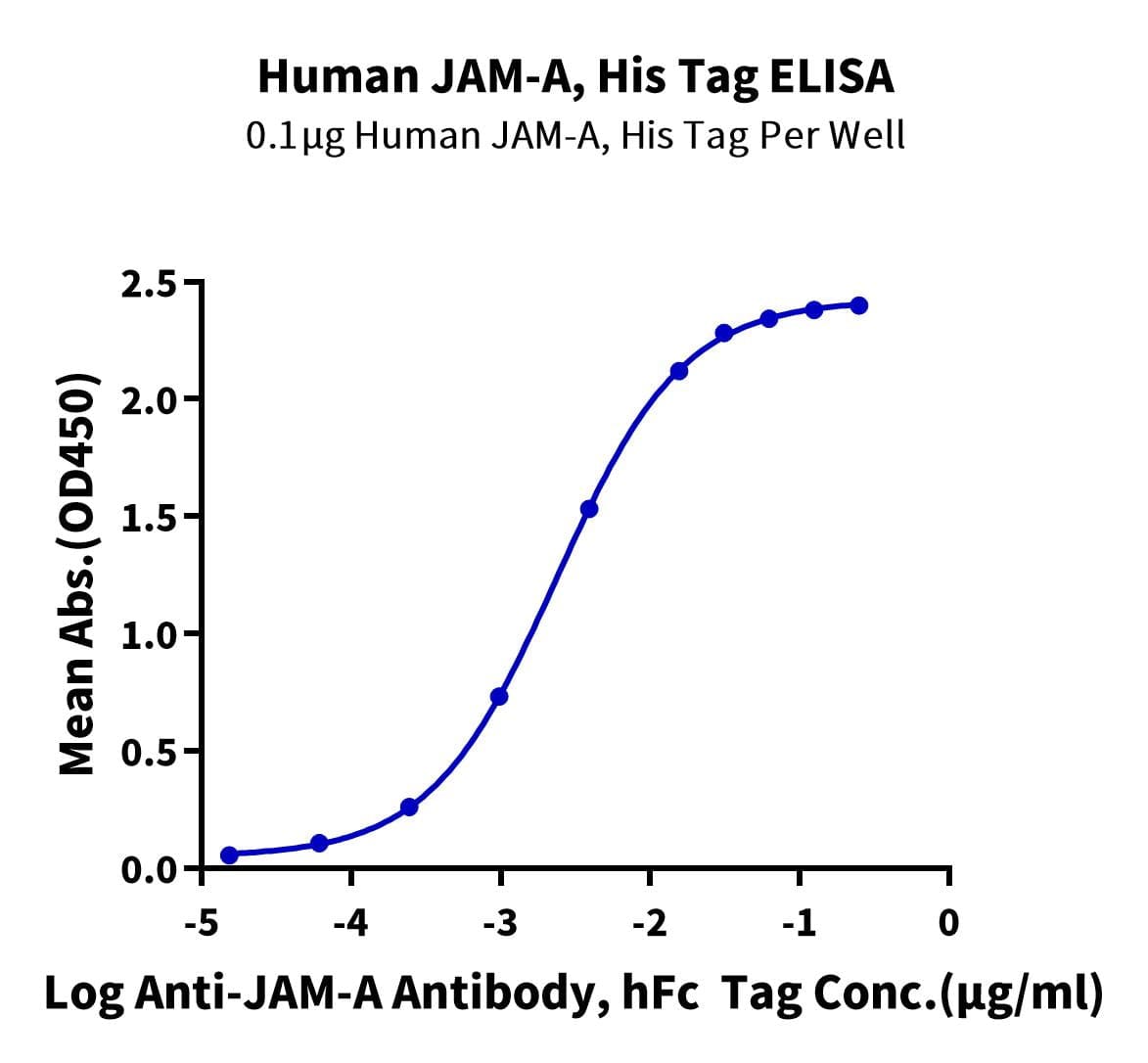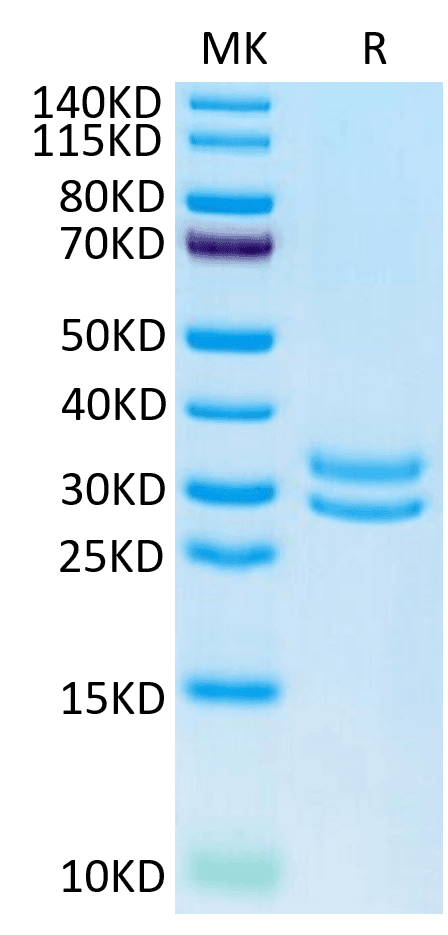| Weight | 1 lbs |
|---|---|
| Dimensions | 9 × 5 × 2 in |
| accession | Q9Y624 |
| express system | HEK293 |
| product tag | C-His |
| purity | > 95% as determined by Tris-Bis PAGE |
| background | junctional adhesion molecule A (JAM-A), a cell adhesion molecule, is highly elevated in human GBM cancer stem cells and predicts poor patient prognosis. While JAM-A is also highly expressed in other cells in the tumor microenvironment, specifically microglia and macrophages, JAM-A functions to suppress pathogenic microglial activation in the female tumor microenvironment, highlighting an emerging role for sex differences in the GBM microenvironment and suggesting that sex differences extend beyond previously reported tumor cell-intrinsic differences. |
| molecular weight | The protein has a predicted MW of 24 kDa. Due to glycosylation, the protein migrates to 28-35 kDa based on Tris-Bis PAGE result. |
| available size | 100 µg, 500 µg |
| endotoxin | Less than 1EU per μg by the LAL method. |
Human JAM-A Protein 3983
$300.00 – $1,000.00
Summary
- Expression: HEK293
- Functional: Yes (ELISA)
- Amino Acid Range: Ser28-Val238.
Human JAM-A Protein 3983
| protein |
|---|
| Size and concentration 100, 500µg and lyophilized |
| Form Lyophilized |
| Storage Instructions Valid for 12 months from date of receipt when stored at -80°C. Recommend to aliquot the protein into smaller quantities for optimal storage. Please minimize freeze-thaw cycles. |
| Storage buffer Shipped at ambient temperature. |
| Purity > 95% as determined by Tris-Bis PAGE |
| target relevance |
|---|
| junctional adhesion molecule A (JAM-A), a cell adhesion molecule, is highly elevated in human GBM cancer stem cells and predicts poor patient prognosis. While JAM-A is also highly expressed in other cells in the tumor microenvironment, specifically microglia and macrophages,JAM-A functions to suppress pathogenic microglial activation in the female tumor microenvironment, highlighting an emerging role for sex differences in the GBM microenvironment and suggesting that sex differences extend beyond previously reported tumor cell-intrinsic differences. |
| Protein names Junctional adhesion molecule A (JAM-A) (Junctional adhesion molecule 1) (JAM-1) (Platelet F11 receptor) (Platelet adhesion molecule 1) (PAM-1) (CD antigen CD321) |
| Gene names F11R,F11R JAM1 JCAM UNQ264/PRO301 |
| Protein family Immunoglobulin superfamily |
| Mass 9606Da |
| Function Seems to play a role in epithelial tight junction formation. Appears early in primordial forms of cell junctions and recruits PARD3 (PubMed:11489913). The association of the PARD6-PARD3 complex may prevent the interaction of PARD3 with JAM1, thereby preventing tight junction assembly (By similarity). Plays a role in regulating monocyte transmigration involved in integrity of epithelial barrier (By similarity). Ligand for integrin alpha-L/beta-2 involved in memory T-cell and neutrophil transmigration (PubMed:11812992). Involved in platelet activation (PubMed:10753840).; (Microbial infection) Acts as a receptor for Mammalian reovirus sigma-1.; (Microbial infection) Acts as a receptor for Human Rotavirus strain Wa. |
| Catalytic activity #N/A |
| Subellular location Cell junction, tight junction. Cell membrane ; Single-pass type I membrane protein. Note=Localized at tight junctions of both epithelial and endothelial cells. |
| Tissues Expressed in endothelium, epithelium and leukocytes (at protein level). |
| Structure Interacts with the ninth PDZ domain of MPDZ (PubMed:11489913). Interacts with the first PDZ domain of PARD3 (PubMed:11489913). The association between PARD3 and PARD6B probably disrupts this interaction (By similarity). Interacts with ITGAL (via I-domain) (PubMed:15528364).; (Microbial infection) Interacts with Mammalian reovirus sigma-1 capsid protein.; (Microbial infection) Interacts with Human Rotavirus strain Wa vp4 capsid protein. |
| Post-translational modification N-glycosylated.; (Microbial infection) Cleaved by H.pylori virulence factor PqqE. Cleavage leads to altered tight junction functions. |
| Domain Th |
| Target Relevance information above includes information from UniProt accession: Q9Y624 |
| The UniProt Consortium |
Data
Publications
Publications
| pmid | title | authors | citation |
|---|---|---|---|
| We haven't added any publications to our database yet. | |||
Protocols
| relevant to this product |
|---|
Documents
| # | ||
|---|---|---|
| Please enter your product and batch number here to retrieve product datasheet, SDS, and QC information. | ||
















